Scania entered the Indian truck market in 2007 by partnering L&T for the construction and mining segments. Subsequently, Scania Commercial Vehicles India (SCVI) was established in 2011, which was followed by the launch of its range of on-road trucks towards the end of 2012. Earlier this year, the company made a foray into the bus segment with its premium range of Metrolink coaches, thus underlining its objective of being a long-term player in the Indian truck and bus market. We get a business update from Mr. Anders Grundstromer, Managing Director, SCVI, in an exclusive interview with him.
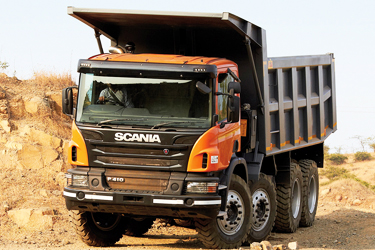
Excerpts:
To begin with, congratulations on Scania’s recent breakthrough order for 120 buses from Siddhi Vinayak Logistics Ltd. (SVLL). How important is this for Scania’s plans for the Indian bus market.
The order from SVLL is very important for us. We are also honored to have the order from them which is a result of the extensive testing of our vehicles and goes to show that our products are successful under Indian conditions. Apart from the bus order, we have been doing extensive testing of our on-road trucks with SVLL and they know that Scania products offer advantages such as high reliability, low fuel consumption and very good comfort. SVLL is one of our most important customers, but we have sold buses to other customers in the country as well, such as KPN Travels, Kallada Tours and Travels and Neeta Travels, among others.
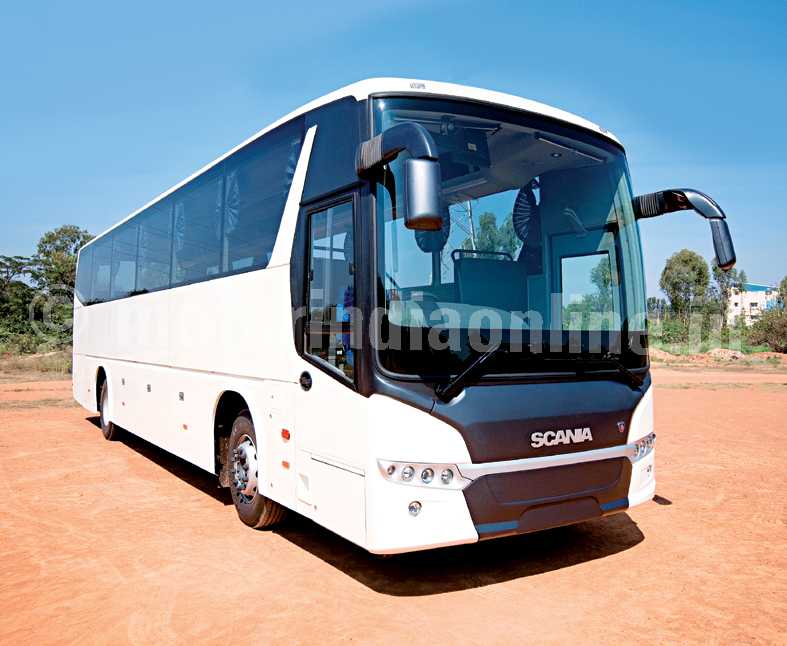
Why did you choose SVLL as your first customer for buses as they are primarily a cargo fleet operator? What made SVLL go for Scania when there are more established players in the industry?
We have been testing our testing our on-road trucks with SVLL since 2012. They are well aware of the excellent comfort and low TCO which Scania offers. They were interested in testing our buses as well and tested the 14.5 m Metrolink coach. Impressed with the performance, they realized that the buses are also very good and decided to place the order. We know each other for a long time and we have a very good relationship as well. They know that Scania buses come with the features and advantages similar to our trucks.
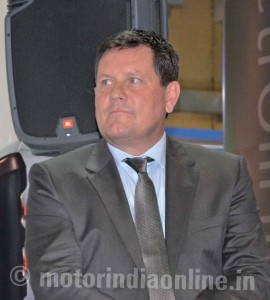
The Metrolink range which you had unveiled at Busworld India attracted a lot of interest at the show. How has the customer response been to the coaches? Have you made any modifications on the products based on customer feedback?
Customers have responded very well to our new range of coaches. Since the launch of our buses at Busworld Mumbai earlier this year, we have worked on improving the performance of our buses, which is always a continuous process at Scania. When it comes modifications into buses, some of our customers preferred customizations in the interiors to suit their needs, following which we have modified the interiors as per their requirements.
How has the feedback been from the State Transport Corporations (STCs)? Which are the STCs you are in talks with? Could we expect any potential orders this year?
Absolutely yes. Apart from private operators, we are in talks with State Transport Corporations as well who have reacted very positively to our buses. We are in discussion with Gujarat and Delhi STCs at present, apart from few more. Better safety and comfort, and also internet connectivity on the move are key factors which drive the growth of the premium bus segment. We believe that with a rapidly-improving road network and a growing middle-class population, there will be huge demand for bus transportation in the country, with better safety and comfort, which Scania is looking to cater to.
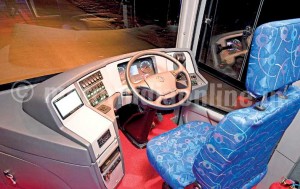
What would be your next steps to further penetrate into the Indian bus market?
Currently we have the Metrolink 12 m, 13.7 m and 14.5 m intercity coaches. We are looking at alternative fuels such as biogas and ethanol, the BRT segment and also a possible entry into the city bus segment. When it comes to sustainable solutions where Scania has a very strong hand globally, we can offer solutions to STCs and private operators that give them huge benefits on fuel efficiency and TCO. Also, from an environment point of view, we have solutions ready at Scania that can reduce the environmental impact of the city buses and BRT in India.
With more BRT coming up in the country, it is an interesting segment we are looking at, besides the intercity coach segment. Going forward, we will enter the city-bus segment as well. We have city buses all over the world and also for India, and are having several discussions across the country for sustainable city bus transport solutions.
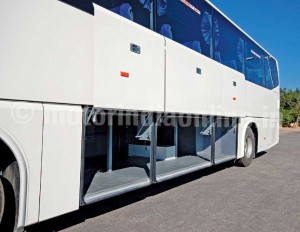
Scania had launched its first four trucks for on-road applications at the end of last year. Have you bagged any orders following the successful customer trials?
We have had successful trial runs of our on-road trucks from Chennai to Bangalore with Allcargo Logistics and also some trials by SVLL. We have had hundreds of customers who are keen on knowing more about the results of these trials runs. There are a lot of customers in India who realize that the better TCO, low fuel consumption, better safety and comfort of Scania offers huge benefits when compared to their existing fleet of vehicles.
For the on-road truck segment, apart from the dealers in Mumbai and Chennai, have you identified any partners in other locations? And, with your entry into the bus market, how do you plan to cover the entire country for servicing your buses?
We have signed up with a new dealer at Cochin in Kerala. We have appointed a dealer each in Andhra Pradesh and at Bangalore, in addition to our existing dealers at Mumbai and Chennai. We are currently in talks with one in Hyderabad. We wanted to secure the south and west regions first, which is almost done, and will now move on to the north and east parts of the country.
In addition to the dealer outlets, we are also investing in service vans to guarantee service support to our customers within two hours of intimation. We are placing the service vans along the important truck and bus routes in order to be able to reach the vehicles quickly. The vans are equipped with all necessary service parts and are manned by trained mechanics to ensure the best service support to our customers.
Besides, we also have co-operation with L&T for the mining and construction segment and they can support us through their dealer network in areas where we are yet to set up our own dealer network. L&T has dealers close to the important mining locations in the country to provide back-up for customers in the segment mainly in the north, central and eastern parts of India. Though these dealers are not formally for on-road trucks, they can assist in servicing our on-road trucks if needed. And, since 70 per cent of the components in a truck are the same as in a bus, they can help in maintaining our buses as well.
We understand that it’s not enough to just have good products in different segments, but we have to back them up with efficient service and good availability of spares to be able to deliver quality, safe and comfortable transport solutions to both fleet operators and passengers.
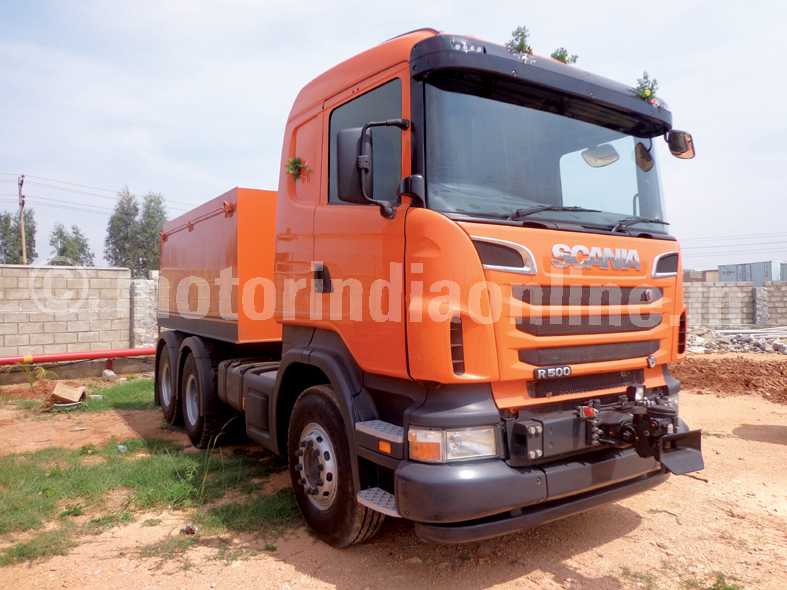
Could you give us an update on your new manufacturing facility? What is the current status of the plant and when is the start of production? Has the prolonged slowdown in the Indian automotive market led to any change in plans at Scania, both short-term and long-term?
There is no change in our plans for the Indian market. We operate in the premium segment which has not seen the slowdown as in the B and C segments in the market, where some competitors have been hit hard. Of course, the premium segment is much smaller than other segments, but our plans are well on track.
The kind of reception our products have had in India is very encouraging. When we see that we have a product that is excellent in TCO, fuel consumption, driver comfort, passenger comfort, etc., factors which are more and more appreciated and demanded in India, we know that we have delivered a very good product. There is absolutely no change in our investment and production plans and we are certain that we are only in the beginning of our journey in the Indian market.
How is the situation in the construction and mining segment? Do you see any signs of recovery in the field in the near future? How has Scania done in the segment in the last half year?
We have done very well in the segment, having sold more vehicles this year than the previous years. We see a lot more construction projects taking off this year than previous years, so despite the problems in the mining segment, the construction segment continues to grow well.
On the mining side, India has large reserves coal but is utilizing just one per cent of the resource today. The country imports coal which is not good for the economy. When the Government takes full control of the mines, there will be more mines opening up in the near future which will hopefully trigger some growth in the segment.
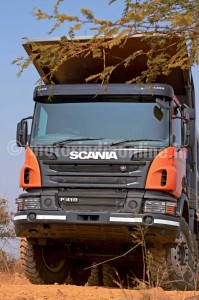
With commercial vehicle manufacturers setting up huge capacities in India and with the population of trucks and buses steadily on the rise, driver shortage is looming large. How does Scania plan to address this issue? Do you have any specific plans for driver training?
First, we have to improve the status of drivers in India. Drivers are the single most important factor when it comes to safety and good TCO across the globe, which means, also in India. Before a driver enters a Scania bus or truck, they go through a comprehensive training program which is then followed-up with continuous refresher trainings throughout the life-time of the vehicle.
We are working with our customers and the government to help raise the status of drivers in the country. A bad driver can ruin five to 10 years of an efficient engine development program, while another who has undergone proper driver training can lead to enhancing the fuel efficiency by nearly five to 18% depending on his capability.
Training is a very important factor for having safe transportation and high quality in deliveries. But it’s not only the drivers who contribute to efficient transportation in India. It’s unacceptable that nearly 30 per cent of the country’s harvest is wasted due to poor transportation speed and lack of proper cold chain solutions. Issues such as the implementation of GST will also go a long way in improving the country’s transportation system.
Scania has been known for delivering complete transport solutions across the globe. Having been present in the Indian market for over six years now, has Scania had to do anything different in India when compared to other global markets? Is the Indian market maturing or responding as you had expected it to?
Our main message is that Scania offers the lowest total cost of operation. We do not sell our products on the basis on price but we tell our customers how much they can benefit due to the technical advantages in our products. For instance, the average speed during the trials of our on-road trucks was 40 kmph, as compared to the same customers’ usual average speed of 19 kmph with other vehicles.
More and more customers have accepted that Scania has the lowest TCO at premium quality and in addition has high residual value for the vehicle. The customers with whom we had discussions were first interested in testing the vehicles, after which most of them have gone on to place orders.
As said earlier, we have just started our journey in the Indian transport industry. With many global retail companies entering the Indian market, there is growing demand for better quality deliveries from the transporters. Going forward, we will see a much more mature transport industry in India in the next five years than what we are seeing today.